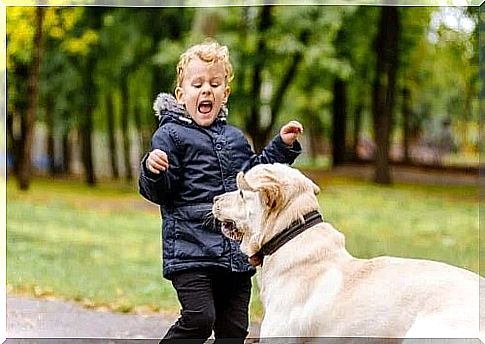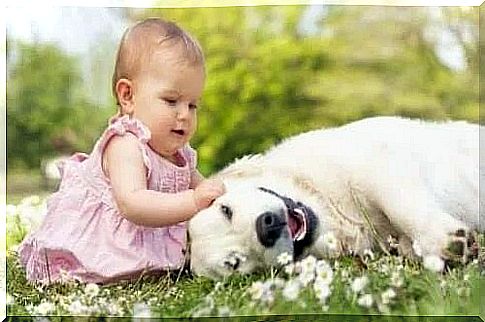Animal Fear In Children: What To Do?

Not all children react the same way when they see a dog or other pet. Some want to caress them and feel very attracted to them. Others prefer to stay away, showing that they are afraid of animals. There is no specific reason why this is happening. Sometimes everything can happen because of an unfortunate previous experience or because the little ones have been taught that an unknown animal can be dangerous. There are also children who simply feel intimidated by the strange silhouette of the animal. So what can you do about animal fear in children?
“Some children are more active and adventurous, while others are calmer and less open to new experiences. The latter feel more stressed when faced with the new and the unknown, ”says Dr. Tracy Dennis, of the Department of Psychology at Hunter College.
Although fear is a defense mechanism that keeps children safe, it is best to teach them to show respect and to be cautious, not afraid. Fear of animals prevents them from experiencing new things.
Animal fear in children: what to do?

Fear is irrational. Therefore, forcing children not to be afraid of animals will not help.
It is best to try to understand what causes fear and look for a strategy to help them deal with this problem. For example, if the little one is scared of a dog because of its size, do not suggest that he approach a large specimen. If you meet a small dog, approach him and then encourage your child to follow you.
Children can approach an animal with excessive emotions and scare it, which usually causes a violent reaction that will scare even the little ones.
The best thing is to guide them at every step and choose carefully the words you use. It’s best to avoid words that alert them, such as “Be careful not to bite” or “Don’t get too close, because it can be dangerous.” Use encouraging statements, such as “Treat the animal with love” or “Be kind to the animal.”
It starts by teaching children that they must always ask their owner’s permission to approach the animal. It is best to allow the animal to smell the baby’s hand before attempting to caress it. Both dogs and cats feel more comfortable after inspecting the smell of a new person.
Try to distract the animal by stroking its face. Then, invite the children to touch it from one side, preferably not on the tail, to avoid scaring the animal. The animal’s face can be intimidating to the child.
Avoid chickens

Young animals are more unpredictable than adults. For them, the game can be bites, scratches or jumping on people. What for an animal can be a gesture of trust, joy and love, can seem a hostile gesture for children.
Teach children animal language
Pets have a unique way of communicating with humans. Learning this language and teaching it to children can be very helpful in facilitating a meeting.
For example, Linda Case, author of Canine and Feline Behavior and Training: A Complete Guide to Understanding Our Two Best Friends, states that “An open mouth with drawn lips, tongue out, and a relaxed face is an invitation to interact.”
Teach them how to interact with animals

Like puppies, children are unpredictable. This fear can turn into excitement once the first encounter with the animal is a success. Being too excited, their actions can frighten or disturb the animal. Explain to the children that they should not push the animal, grab its fur or pull its tail.
Don’t bring the animal home
Many parents think it is a good idea to bring a pet home. Maybe in time, the child and the pet will get used to each other, but many days of unnecessary stress will pass.
Wait until the children are ready. Some people keep the pet in another room until the child begins to trust him, but this is not a good idea either. Your pet can become aggressive if you do this because he will understand that his role is not to socialize.









